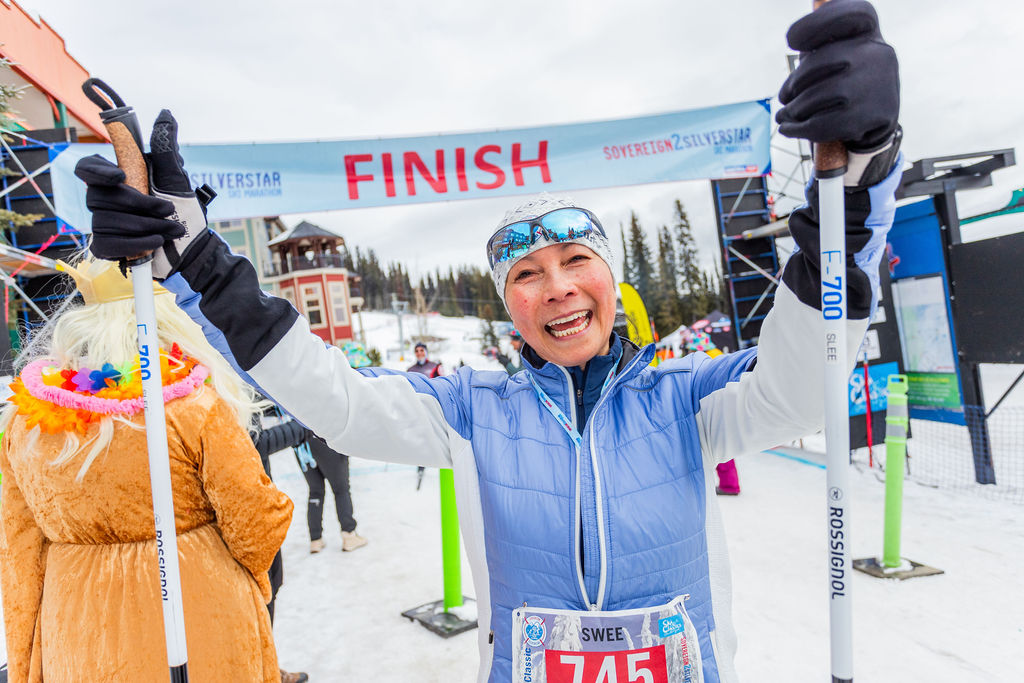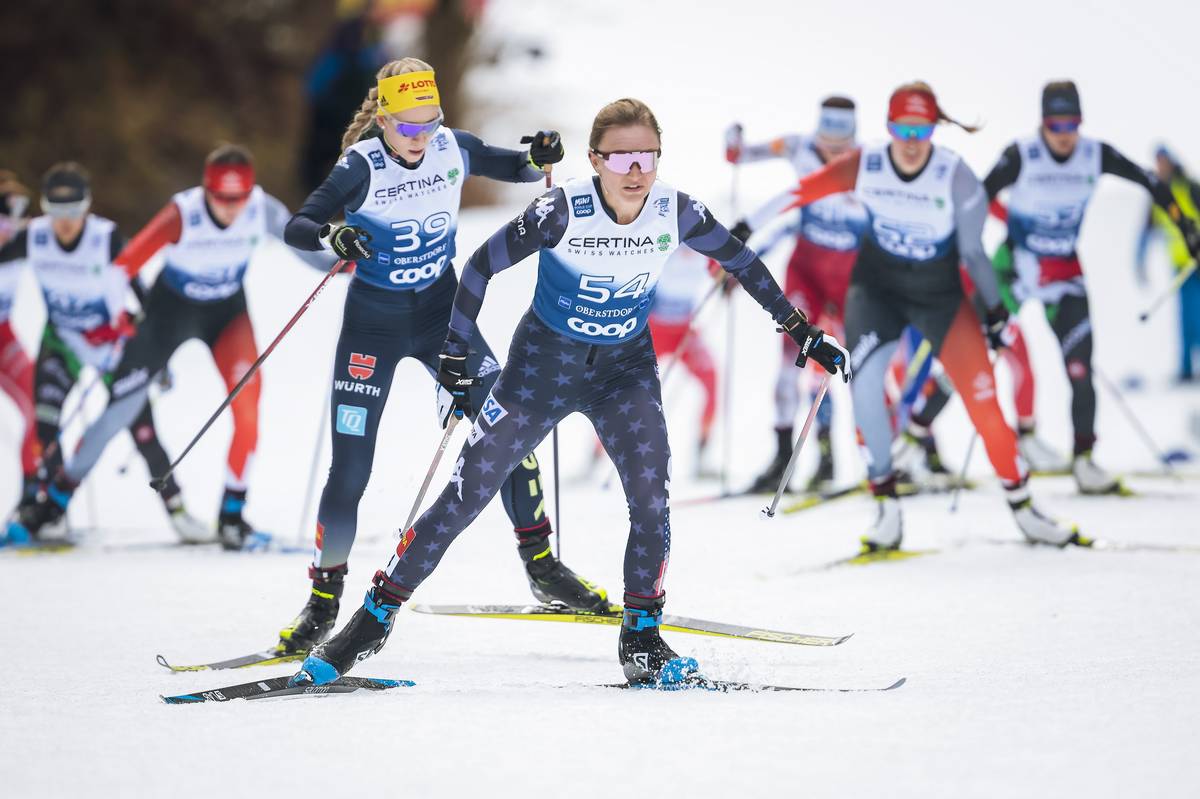On the weekend of September 17-19, the New England Nordic Ski Association (NENSA) hosted a Nordic Symposium with an impressive lineup of presenters, including Zach Caldwell, former Canadian National Team Leader Dave Wood, former US Ski Team coach Pat Casey, Stratton Mountain School Program Director Sverre Caldwell,and NENSA Executive Director Pat Cote, among others.
The event, held in Waltham, Massachusetts, outside of Boston, was attended by over 40 coaches, athletes, and presenters, and it covered a wide range of topics of import to the cross-country skiing community.
FasterSkier Associate Editor Nat Herz attended the Symposium.

At first glance, the suburban wasteland that is Waltham, Massachusetts, does not seem like a good place for a gathering of cross-country ski coaches and cognoscenti.
To be fair, there’s a park nearby. But I was still skeptical when I arrived at the gigantic Westin Hotel, where the New England Nordic Ski Association’s (NENSA’s) symposium was held last weekend. The place evoked Las Vegas more than it did the sport of cross-country skiing.
But as it turns out, if you’re going to have to sit inside for 12 hours on a beautiful fall day, it’s probably better to do it in a windowless room just outside of Boston than, say, a place where you could see what you were missing.
At the invitation of NENSA, I drove down to the symposium with Williams College Assistant Coach Aubrey Smith. There, I heard 11 different presentations over the course of three days, on topics ranging from eating disorders to “developing cross-country ski skills and fitness through dance and game play.”
I thought I’d relay information from a few of the presentations most relevant to FasterSkier readers. But first, a caveat: In no way am I speaking for the presenters. If you have any questions about the material below, they should be directed to Janice Sibilia at NENSA (janice@nensa.net), or to the presenters themselves.
On Saturday morning, Zach Caldwell gave a presentation on his work with Kris Freeman. Caldwell is Freeman’s coach, and at the beginning of the talk, he discussed the time he has spent contemplating how to improve consistency in Freeman’s skiing. Skiers, Caldwell said, have much higher volatility in their results from week to week than athletes in other sports.

Over the past two years, Caldwell and Freeman have come at this problem by shooting for what Caldwell dubbed “high-energy skiing.” Among other things, this entails a new training strategy of four-day blocks—three days of harder workouts, followed by a day of recovery. This is in contrast to earlier in Freeman’s career, when he was doing three-week blocks, from which he required a full week to recover.
Towards the end of those three-week blocks, Freeman would be getting into a state of “deep fatigue,” which Caldwell said was taking a toll on his long-term energy levels. The new four-day block leaves Freeman no farther than a day or two away from recovery, at any time, and, as Caldwell says, no more than seven days away from a “great performance.” However, it is important to note that a recovery day is not the same as a rest day, and Freeman’s fourth day is often still a solid workout.
Caldwell also discussed the technique elements that he and Freeman have been focusing on. Skiing too powerfully, Caldwell said, and spending too much time in balanced, static positions, locks lactate into the muscles—which in turn holds performance levels below what the aerobic system could otherwise enable. More effective, Caldwell said, is an elastic technique, which takes advantage of gravity and natural muscle movements. As a metaphor, Caldwell described the difference between using a dead-blow hammer (which gives no rebound), and a rubber mallet. You want to be the rubber mallet—harnessing the energy from the rebound to use in your next strike.
The technique is slightly less efficient, but because it allows Freeman to use a higher proportion of his fitness, he can use it to go faster.
Caldwell was followed by Kurt Jepson, a Maine-based physical therapist who works with the U.S. Ski Team. Jepson discussed some of the research and thinking on chronic exertional compartment syndrome (CECS). Highlights included:
–Low muscle capillary supply has been associated with CECS, but it’s still unknown whether that’s a cause or effect.
–A study in the early 1990s revealed no difference in compartment pressures in individuals who had been classic skiing vs. skate skiing. Double-poling also could provoke problems.
–The recurrence rate for CECS after surgery is between three and 12 percent.
Saturday night and Sunday morning focused on development. On Saturday, a round-table discussion focused on the topic of bringing more NENSA skiers up to an elite level. Many people connected this issue to growing support for the sport at the local/club/grassroots level.
Sunday morning, we moved on to club development, with presentations by NENSA Executive Director Pat Cote and Stratton Mountain School Program Director Sverre Caldwell, who both honed in on the idea of harnessing local resources. Caldwell works closely with the nearby Bill Koch league in Vermont, while Pat relied on the enthusiasm of a key group of local volunteers to start a new club in his hometown of Waterville, Maine. Cote’s club has obtained sponsorship from a nearby hospital to help offset club fees for participants, and they also received money from the city to purchase a groomer.
These presentations shared a common theme with the discussion session the night before, recognizing that an emphasis on getting people involved at the grassroots level of skiing would raise the sport’s profile. The more people who ski, the more visible the sport gets, which can in turn help older athletes with their ability to obtain funding and sponsorship—and making skiing more attractive for younger athletes. Another concept discussed, and one that we see informally already, was the idea of creating “local heroes”—successful senior athletes who model the sport for children.
As readers may be able to tell, I left the symposium with a lot of information to digest—and I certainly don’t claim to understand everything I heard. But one thing that was clear was the passion, enthusiasm, and creativity of all those in attendance, who were willing to spend almost two full days inside that windowless room to learn and to ponder solutions to the ski community’s problems. I’m already looking forward to next year’s edition.
Nathaniel Herz
Nat Herz is an Alaska-based journalist who moonlights for FasterSkier as an occasional reporter and podcast host. He was FasterSkier's full-time reporter in 2010 and 2011.





One comment
elizabeth
September 28, 2010 at 12:13 pm
While I don’t live in Waltham, MA, I do appreciate what it has to offer: proximity to a great city, diversity, good schools, and access to parks and conservation land. That’s not to mention proximity to a cross-country ski area that exposes thousands of urban and suburban dwellers, people who otherwise would have no knowledge of cross-country skiing, to the beauty of the sport. I was therefore very disappointed to read such derogatory remarks about “the suburban wasteland that is Waltham, MA.” Much is made in the cross-country world of the need to increase the knowledge of and appreciation of cross-country skiing. Perhaps the author’s perceived inappropriateness of venue which evoked for him the spirit of Las Vegas rather than that of cross-country skiing will prompt him to take a harder look at just why sitting “for 12 hours on a beautiful fall day…in a windowless room just outside of Boston (rather) than, say, a place where you could see what you were missing” is exactly the point.